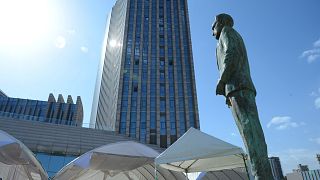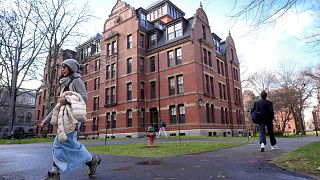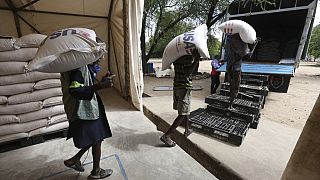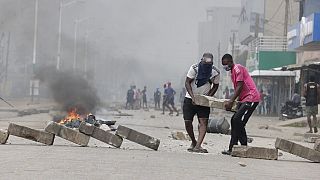Ethiopia
For twenty years, only soldiers, refugees or rebels had ventured to the border between the enemy brothers of the Horn of Africa, Ethiopia and Eritrea. But with the normalization of their relations, the former desert no man’s land is now quivering with activity.
Trucks loaded with bricks and wood, fruit and vegetable carts and local buses visiting their families are now crossing the border under the benevolent eye of soldiers who until a few months ago looked at each other as dogs from their trenches dug in the rock.
“We have everything we didn’t have before, from the smallest to the largest,” says Abraham Abadi, a merchant in the Eritrean city of Senafé, whose shop is full of cookies, drinks and other goods from Ethiopia.
But the dramatic reopening of the border this summer has also brought its share of problems, with an influx of Eritrean refugees in Ethiopia and a chaotic exchange market between the currencies of two countries with very unbalanced economic development.
Once a province of Ethiopia, Eritrea gained its independence in 1993 after several decades of bloody war.
The border demarcation then caused a two-year conflict in 1998 that left tens of thousands dead, before ending with more than 15 years of Cold War, with Ethiopia refusing to comply with UN recommendations on the demarcation of the border.
Until the arrival in Addis Ababa of the reformer Abiy Ahmed, who decided last June to normalize relations between the two neighbours.
Flights between Addis Ababa and Asmara resumed in July, embassies reopened and in September, Ethiopian Prime Minister Abiy Ahmed and Eritrean President Issaias Afeworki reopened the border crossing at Zalambessa, a historic crossing point between the two countries.
This reopening upset the small town, which had been drowsy for twenty years of conflict. Fruit and vegetable stalls, bazaars and small restaurants follow one another along the main street.
“Shidas are sold”, the very classic sandal from the Horn of Africa, a giant pair of which stands in a square in Asmara, the Eritrean capital, says Ruta Zerai, in her father’s shop in Zalambessa.
In Sénafé, a shopping centre about 20 kilometres north of the border, the market is alive again.
Twice a week, organized groups of Ethiopian traders cross the border – just cleared of minefields – to deliver everything they can, from phone cards – the Ethiopian network reaches Senafe – to the precious teff, the gluten-free cereal at the base of the injera, the typical cake from the Horn of Africa.
Some even decide to stay. “I live where I get a job. As long as I have a job, I will stay here,” explains Sanle Gebremariam, an Ethiopian money changer who works at the Sénénafé bus terminal.
And the exchange between the currencies of two countries, the Eritrean Nafka and the Ethiopian Birr, is a major problem for traders.
“We trade, but the exchange rate is too unstable, too variable, it’s illegal,” complains Taeme Lemlem, who runs a café in Zalambessa, echoing many other traders.
According to Getachew Teklemariam, a former adviser to the Ethiopian government, border trade, where customs and immigration controls are virtually non-existent, risks creating a “shadow currency war” between the two countries.
“The exchange rate is governed by speculative perceptions on both sides of the border, when it should be guided by a real business strategy,” says the Ethiopian consultant.
The opening up between the two countries raises hopes of development that clash with the reality of Eritrean underdevelopment, while the Ethiopian economy is recording some of the highest growth rates in Africa.
“I’m very surprised. I didn’t expect such a level of development,” says Simon Kifle, an Eritrean air force soldier who came to Zalambessa for the first time to do some shopping before returning to his country.
AFP













01:14
Boeing reaches settlement with man who lost entire family in 737 MAX Crash
01:13
China and Ethiopia reaffirm alliance at meeting on sidelies of BRICS summit
Go to video
Kenya set to surpass Ethiopia as East Africa’s largest economy in 2025 – IMF
Go to video
World Food Programme to halt aid for 650,000 women and children in Ethiopia
Go to video
Ethiopians mark Easter with calls for peace and love amid ongoing conflict
02:19
Ethiopians in Washington D.C. keep ancient language and orthodox traditions alive